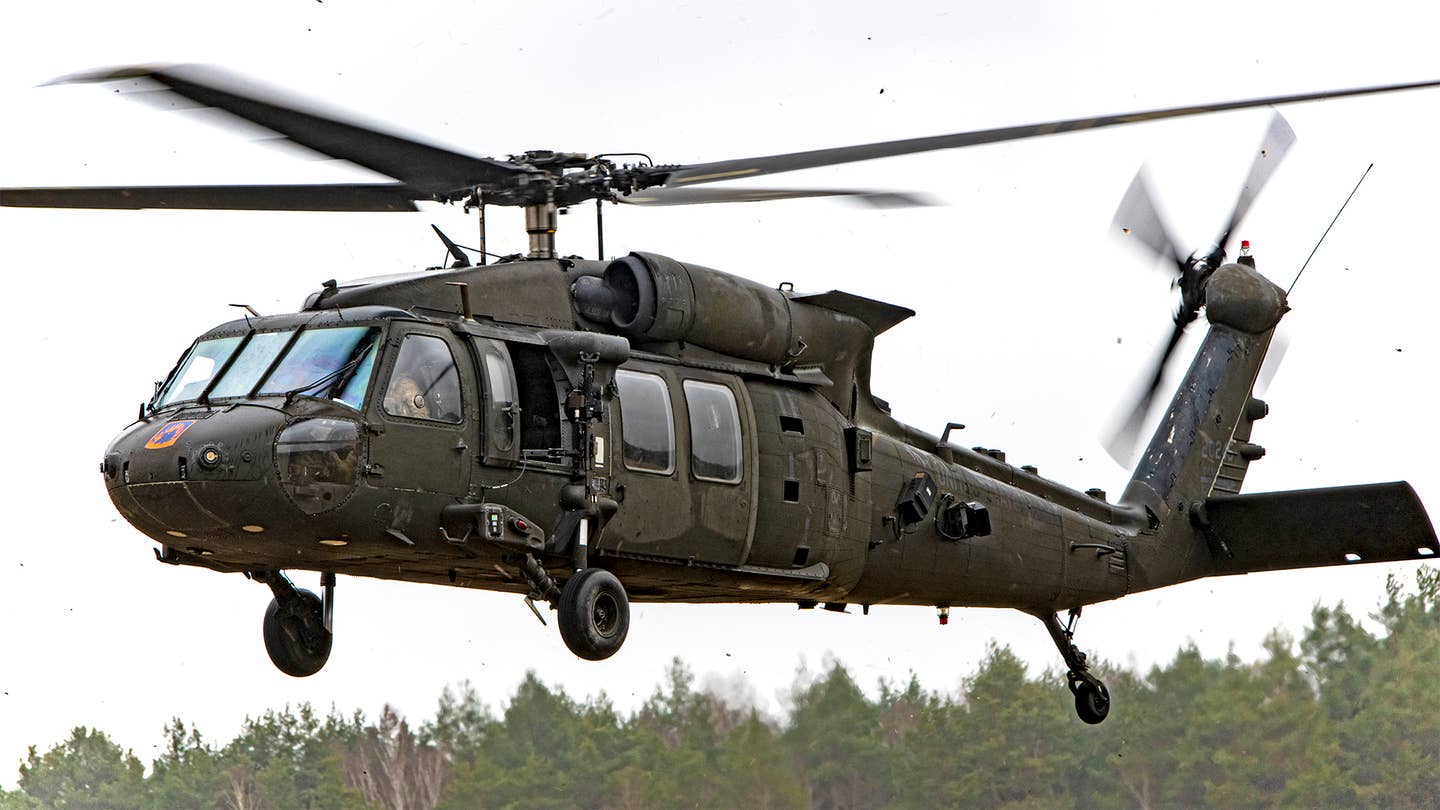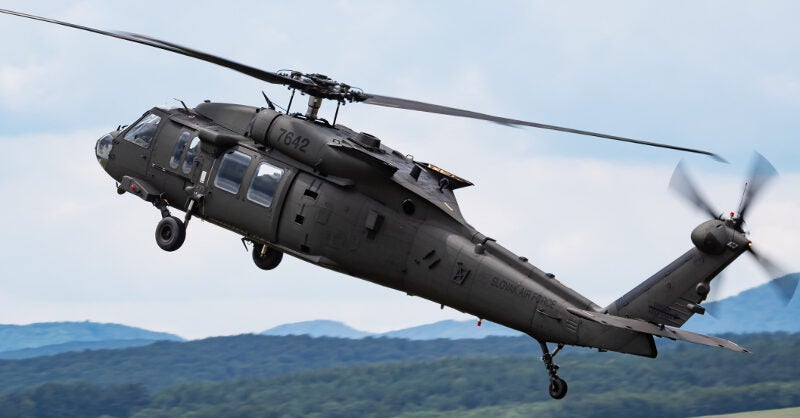The Definitive Guide to Uh-60
Wiki Article
All about Uh-60
Table of ContentsFascination About Uh-60Fascination About Uh-60Everything about Uh-60Getting The Uh-60 To Work
helicopter elements The majority of helicopters the engine turns a shaft that connects to an input quill on the transmission; the primary rotor mast comes right out of the top of the transmission and the tail blades driveshaft attaches to a result quill 90 degrees out of the pole. Spinning the rotor which has an aero aluminum foil section causes lift, permitting the helicopter to increase up and down or float.There are numerous terms related to rotating wing trip as well as it is essential for a student to become familiar with them to understand the mechanics of rotary wing flight. The main rotor blade performs the same feature as an aircraft's wings, giving lift as the blades revolve lift being just one of the critical wind resistant pressures that maintains aircraft aloft.

Simply as it performs in an automobile, a helicopter's transmission transfers power from the engine to the primary and tail blades. The transmission's primary gearbox actions down the speed of the major blades so it doesn't revolve as swiftly as the engine shaft. A second transmission does the very same for the tail rotor, although the tail rotor, being a lot smaller sized, can rotate faster than the major blades.
The Facts About Uh-60 Revealed
Early helicopters relied upon reciprocating gas engines, yet modern helicopters use gas turbine engines like those found in business airplanes. uh-60. 1. Origin: The inner end of the blade where the blades attach to the blade grips. 2. Blade Grips: Large attaching factors where the rotor blade links to the center.Doing this boosts or lowers the lift that the major blades products to the vehicle, allowing the helicopter to gain or lose altitude. This allows the helicopter to move in any direction around a 360-degree circle, including forward, backward, left and.
Helicopters require a completely different method of control than airplanes and are much harder to master. Flying a helicopter requires consistent focus by the pilot and also a near-continuous circulation of minute control modifications. A standard helicopter has its major blades over the fuselage, just aft of the cockpit location, containing 2 or even more rotor blades prolonging out from a central rotor head, or center, setting up.
This swashplate contains one non-revolving disc as well as one revolving disc placed straight on the top. The swashplate great site is linked to the cabin control stick as well as lever and can be made to turn in any type of direction, according to the cyclic stick movement made by the pilot, or went up as well as down according to the collective bar motion.
Some Ideas on Uh-60 You Need To Know
The amount of lift created more is established by the pitch angle (as well as rate) of each rotor blade as it moves with the air. Pitch angle is recognized as the Angle of Strike when the rotors are in activity. This pitch angle of the blades is managed in 2 methods collectively and cyclically./S-70A%20(UH-60M)-2%20EDIT.jpg)
Because all blades are altering pitch with each other, or 'collectively', the modification in lift stays consistent throughout every full turning of the blades. As a result, there is no propensity for the helicopter to change its existing instructions besides directly or down. The images below show the result of raising the collective lever on the swashplate and also rotor blades.
Naturally, real rotor head systems are much more complex than this photo reveals, yet the basics coincide. The cyclic control is made by relocating the control stick that rises up from the cockpit floor between the pilot's legs, as well as can be relocated all instructions besides backwards and forwards.
Not known Details About Uh-60

The pictures below show the effect of this cyclic control on the swashplate and also rotor blades. As the swashplate is slanted, the opposing poles relocate in opposite directions. The position of the poles and also for this reason the pitch of the private blades is different at any given factor of turning, therefore generating various quantities of lift around the rotor disc.
As the stick is leaned over recommended you read in any type of direction, so the angle of the plate changes very somewhat. uh-60. This change of angle corresponds straight to what is occurring to the blades disc at the very same time i. e. the side of the plate that is greater stands for the side of the rotor disc generating more lift.
This tail blades is utilized to regulate the yaw, or turning, of the helicopter (i. e. which way the nose is aiming) and also to describe this we initially require to understand torque. Torque is a natural pressure brought on by any type of transforming things and in a helicopter it is triggered by the engine transforming the major rotor blades; when the blades are spinning then the all-natural response to that is for the body of the helicopter to start spinning in the opposite instructions to the blades.
Report this wiki page